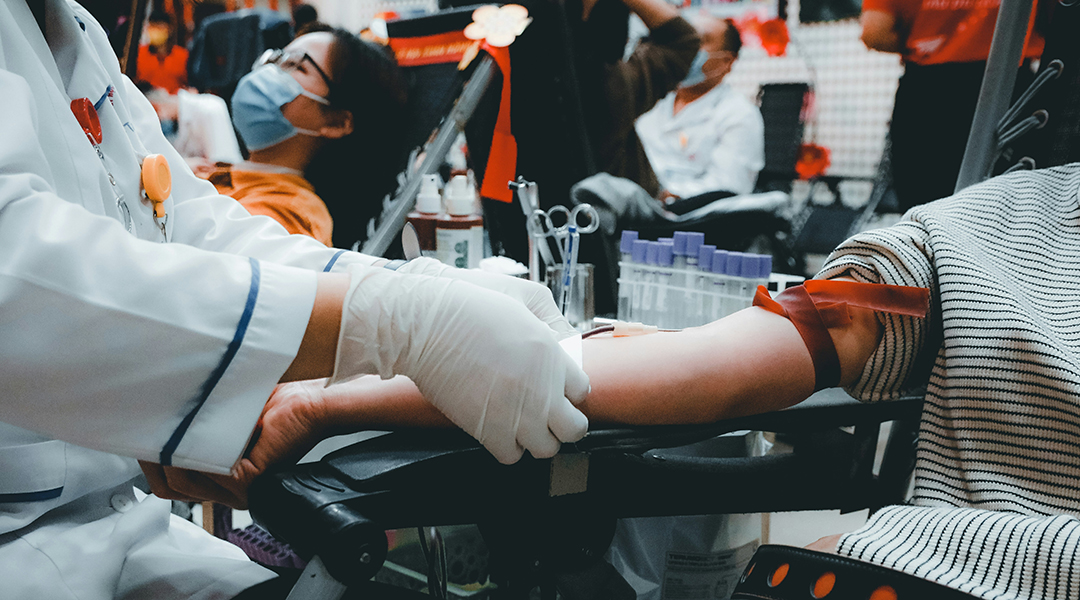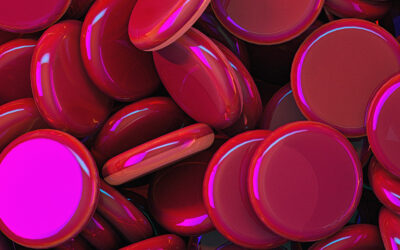Engineered blood cells, made via a simple modification to donated red blood cells, could help solve the blood type matching problem. Tests show it could even pave the way for xenotransfusion — the sharing of blood across species.
There is a large demand for donated blood, with the Red Cross estimating that only 3% of eligible adults donate annually. Traumatic injury, diseases, or routine surgery, all require the transfusion of donor blood to patients, and this supply is consistently under threat.
Limitations in storage exacerbate the problem. Erythrocytes, the red blood cells that carry oxygen, are fragile and can be easily damaged during medical procedures as well as during freezing for long term storage.
Red blood cells also carry proteins in their surface called antigens, which dictate blood type and require that donor and recipient blood are carefully matched for these proteins or else the procedure turns deadly.
Creating a universal donor supply
Overcoming these challenges and creating a more stable and universal blood supply was the lofty goal of an international team working in China, the United States and Europe. To achieve it, they took inspiration from tiny plankton know as diatoms who incorporate silica into their bodies to form an inorganic shell.
“Our goal is to develop ‘life-material composites’ that integrate biological processes or living organisms (e.g., cells, tissues) with artificial materials or technologies,” said Wei Zhu a researcher at South China University of Technology. Zhu is the lead author behind the new engineered blood cells published in the Proceedings of the National Academy of Sciences.
Zhu and his colleagues previously studied how condensing silica, a chemical compound of silicon and oxygen, around cellular structures persevered the microscopic machinery of cells without impeding functions.
For him, blood cells were the obvious next target. Giving erythrocytes a coat of silica armor to protect against toxic substances and the stresses of mechanical transfusion or cryopreservation would help make them more resilient to storage.
“This method is technically simple, requiring no complex equipment, and is both time-efficient and scalable,” Zhu said.
Blood is mixed with a silification reagent followed by a rinsing step. At the molecular level, the silica compounds bind to the surface of the blood cells and then reacts with adjacent cell surface proteins, which cause the silica to cluster and condense at low temperatures, creating a continuous shell.
“It is a simple, cheap, controllable process that could be conducted in any lab with minimal equipment and no expertise,” Zhu says. “As easy to make as a dry martini.”
Encouraging first steps
After confirming the silification process worked, the cells underwent a series of functional tests. The results were impressive but, according to Zhu, not wholly unexpected.
“Given our experience in the field, we had anticipated that biosilicified erythrocytes would enhance mechanical properties and resist damage from toxic substances,” he explained. This proved true and the team achieved nearly 100% cold storage protection of the cells, an impressive improvement for the efficiency of long-term cold storage.
“However, our experiments revealed an unexpected but significant finding,” he said. That was antigenic shielding, in other words, the creation of universal donor blood.
In tests with both rats and mice, the team found that the surface antigens that would normally react with a recipient of a different blood type were blocked, but the blood still carried out its essential functions.
The engineered cells were used during rat liver transplantations regardless of blood type matching, and they even worked for cross-species transfusions in a mouse model with human blood. According to Zhu, this breakthrough offers “the potential to revolutionize future clinical applications.”
The next steps for the engineered blood are clinical trials and more assessments of how the cells are working in the body. According to Zhu, to achieve the goal of large-scale use of this blood a greater understanding of the individual patient groups and the risk for complications is required.
They are also working to improve ambient storage, which would eliminate the need for refiguration, significantly improving accessibility and reducing waste.
Reference: Chuanyi Lei, et al. Improving normothermic machine perfusion and blood transfusion through biocompatible blood silicification, PNAS (2024). DOI: 10.1073/pnas.2322418121
Feature image credit: Nguyễn Hiệp on Unsplash

















